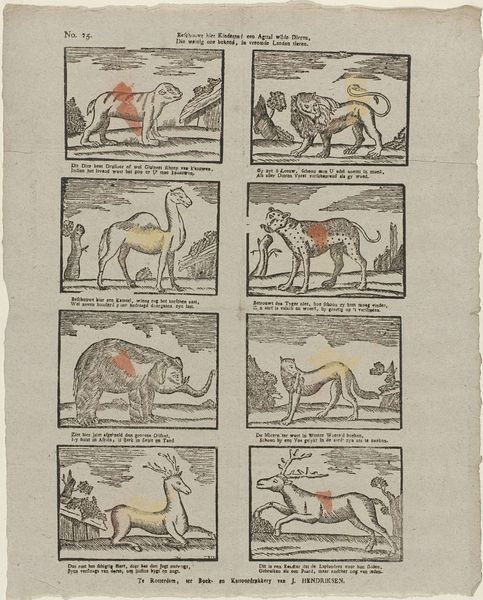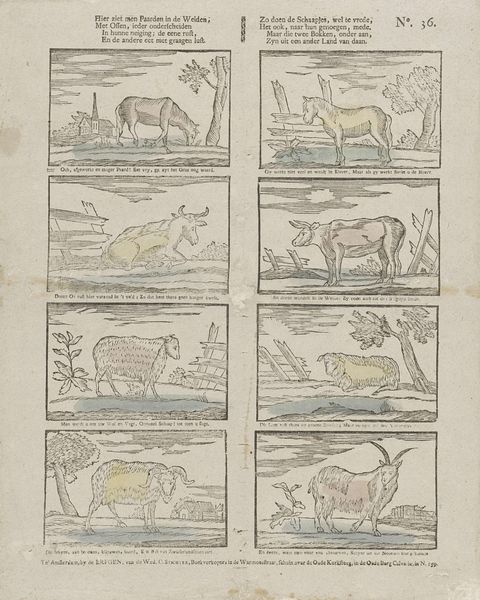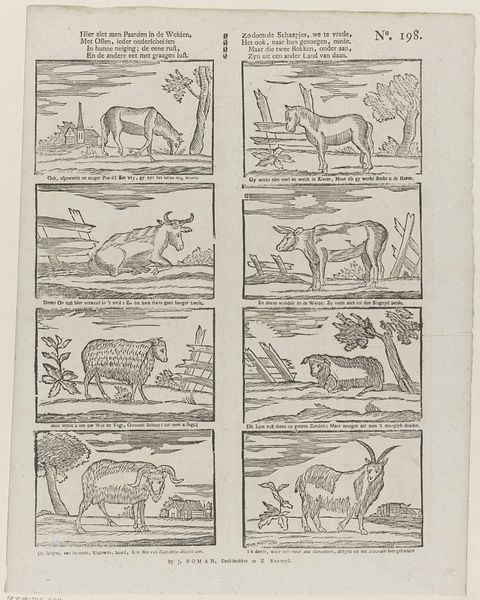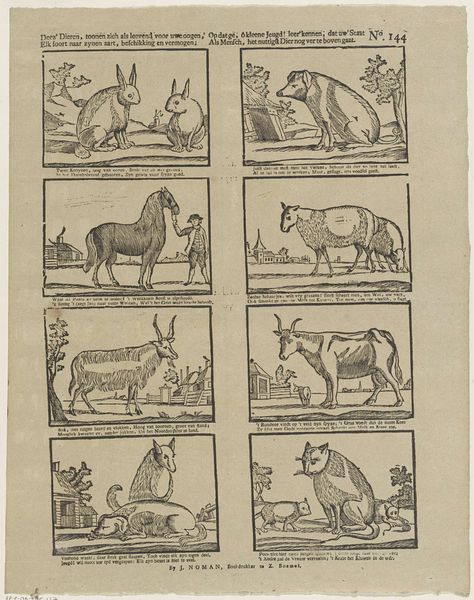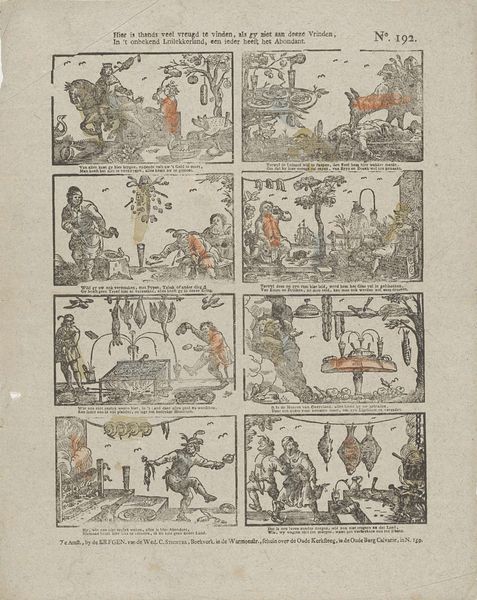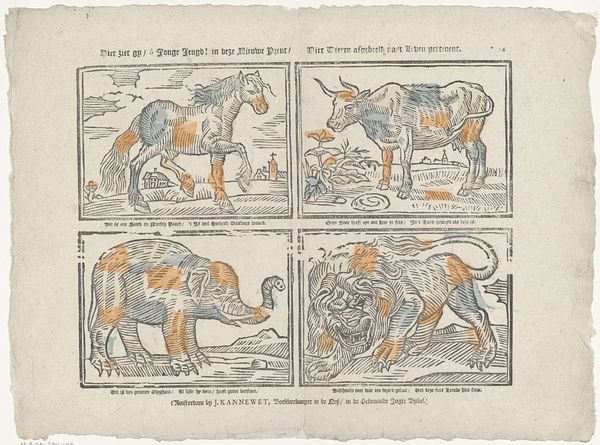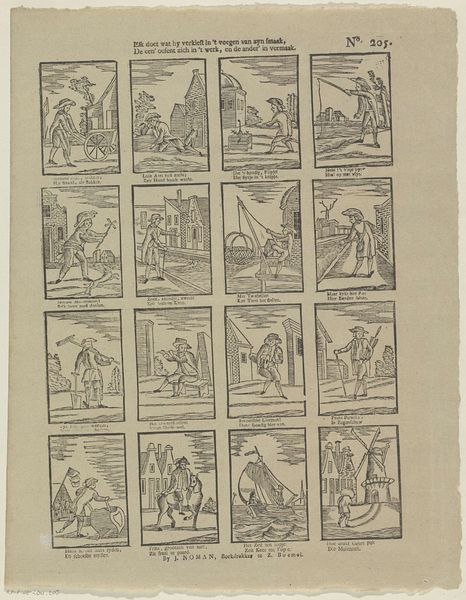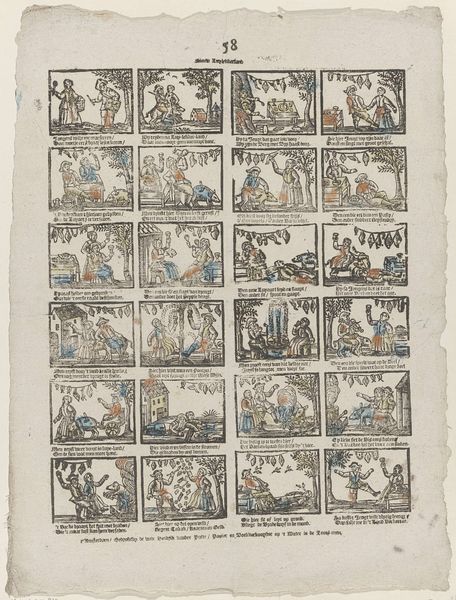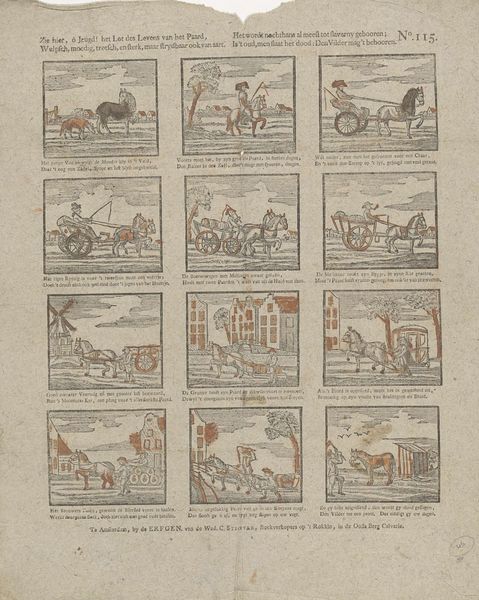![Hier ziet men paarden in de weiden, / Met ossen, ieder onderscheiden [(...)] by erven weduwe Cornelis Stichter](/_next/image?url=https%3A%2F%2Fd2w8kbdekdi1gv.cloudfront.net%2FeyJidWNrZXQiOiAiYXJ0ZXJhLWltYWdlcy1idWNrZXQiLCAia2V5IjogImFydHdvcmtzLzllMzE0ZDkwLTk5ZjYtNGE4MC1iOWFmLWEwZDYzYTA0MjkwNi85ZTMxNGQ5MC05OWY2LTRhODAtYjlhZi1hMGQ2M2EwNDI5MDZfZnVsbC5qcGciLCAiZWRpdHMiOiB7InJlc2l6ZSI6IHsid2lkdGgiOiAxOTIwLCAiaGVpZ2h0IjogMTkyMCwgImZpdCI6ICJpbnNpZGUifX19&w=3840&q=75)
Hier ziet men paarden in de weiden, / Met ossen, ieder onderscheiden [(...)] 1715 - 1813
0:00
0:00
ervenweduwecornelisstichter
Rijksmuseum
print, engraving
# print
#
landscape
#
genre-painting
#
engraving
Dimensions: height 380 mm, width 286 mm
Copyright: Rijks Museum: Open Domain
Curator: Right, let’s dive into this rather unusual print from between 1715 and 1813, entitled “Hier ziet men paarden in de weiden, / Met ossen, ieder onderscheiden [(...)]”. It's attributed to Erven weduwe Cornelis Stichter. The artwork utilizes engraving and portrays a pastoral landscape populated with livestock. What's your first impression? Editor: Well, honestly, it reminds me of those vintage children's books where animals have almost human expressions. It has this slightly unsettling, whimsical feel. The color palette is unexpectedly muted and oddly placed on each animal. The layout, the stacked vignettes... it all feels a bit dreamlike, wouldn’t you agree? Curator: Absolutely. The style aligns with the traditional 'genre-painting' themes common at the time, a cultural fascination with rural simplicity. Consider, for instance, the presence of distinct symbols—the fences marking boundaries between tamed and wild, each animal’s symbolic associations from the era, emphasizing innocence. But it isn't a romantic landscape like a Constable; it's flattened, deliberately archaic. Editor: I'm really intrigued by how each animal gets its own 'panel', like a collection of animal portraits, each self-contained. They each feel like different interpretations of pastoral tranquility, filtered through someone's very particular lens, that of folk culture perhaps. Curator: Precisely. These panel scenes create an emotional landscape that delves into communal beliefs surrounding nature and civilization at the time. Take note of the intentional choice to divide these creatures this way, rather than embedding all of them into one expansive, harmonic composition. Editor: What this piece suggests to me is, that rather than depicting an idealized image, the engraving acts as an imperfect window through time. A reflection of society's perception, which always carries with it some amount of strange nostalgia, something not fully obtainable, much like the picture itself. Curator: Beautifully articulated. The piece invites us to question how humans over the course of history assign symbolic roles and purposes within an ecosystem, shaping these ideas through generations of social and visual codes. Editor: A visual legacy, preserved and now re-interpreted across generations. Well, I know my perception of pasture scenes will never be quite the same.
Comments
No comments
Be the first to comment and join the conversation on the ultimate creative platform.
